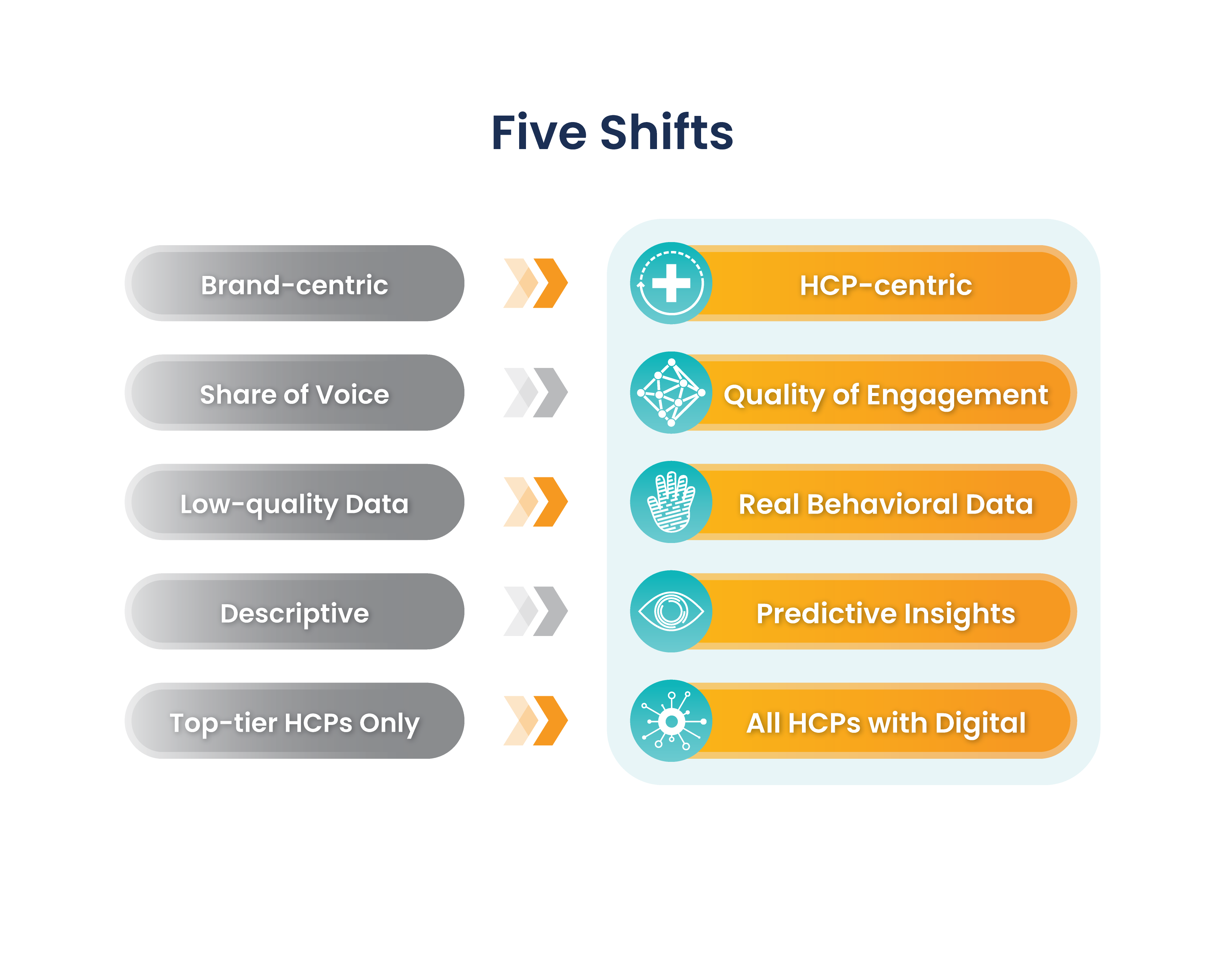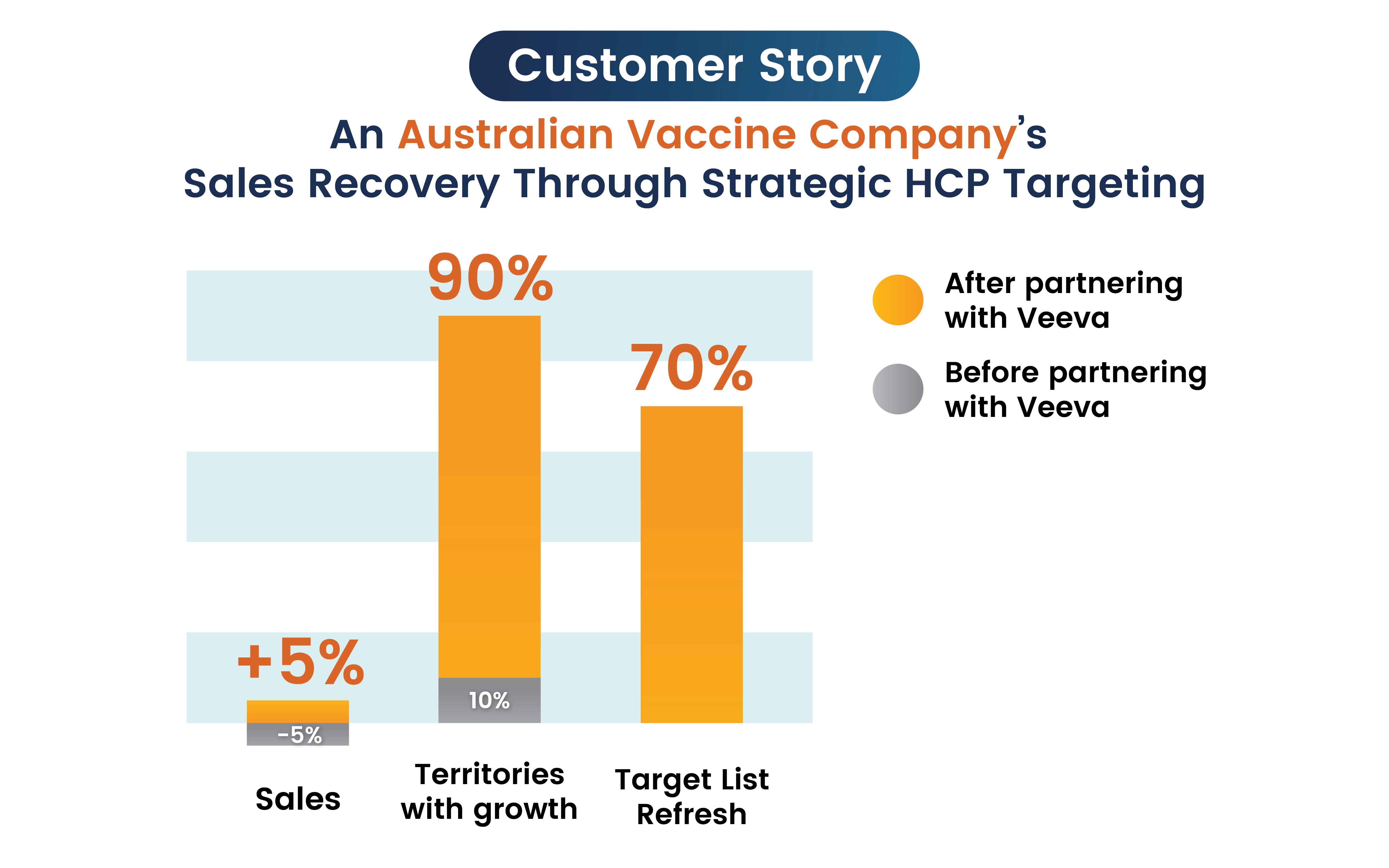Next Generation HCP Engagement: A Personalized, Omnichannel Approach
The Asia-Pacific (APAC) biopharma market is undergoing significant transformation in response to changing market dynamics. Biopharma industry players have been responding to several key shifts, which have resulted in a change in their go-to-market (GTM) approaches and how they engage healthcare professionals.
In a recent webinar, Yi Ching Yeoh (Solution Consultant, Veeva Singapore) and I discussed the evolving GTM strategies for commercial Biopharma. In this article, the GTM approach refers to the strategic process of launching, promoting, and delivering pharmaceutical products to healthcare providers (HCPs) and patients.
What’s Changing?
Factors like aging populations, pressures on healthcare such as the shortage of HCPs, and geopolitics that affect supply chains are resulting in a rising demand for healthcare services, a need for greater efficiencies, and higher cost pressures.

Five shifts that will impact the biopharma GTM approach in the next five years are a move from:
- From ‘brand-centric’ to ‘HCP-centric’:
Go-to-market planning will be centered around HCPs’ needs instead of brand goals (e.g., HCP-centric sales teams vs brand-centric sales teams) - From ‘share of voice’ to ‘quality of engagement’:
The emphasis now is on prioritizing impactful or quality interactions / HCP experience over the number of interactions (e.g., Net promoter score over share of voice). - From ‘rep inputs and low-quality HCP data’ to ‘real-behavioral and high-quality HCP data’:
Planning and execution will be based on real HCP interaction / behavioral data instead of assumptions. The change is triggered by availability of real HCP data in APAC markets. - From descriptive insights to predictive insights:
AI / predictive modelling will be used more in daily engagement planning and execution together with traditional descriptive / historic insights. AI will be leveraged to transform insights into a more human-like next-best-action suggestion to team members. - Focusing on all HCPs and not just ‘high-potential and high-access HCPs’:
Instead of focusing on just the 20-30% of high-potential and high-access HCPs, biopharma companies will broaden their focus to interact with all HCPs, leveraging more digital channels.
Good Data Pivotal to Targeted Strategies
While the software to support these shifts now exists, many companies still struggle with a key barrier: the lack of quality data. The systems may be connected and integrated, but the data itself often remains fragmented, either in silos or duplicates.
This fragmentation has real consequences. Let’s review the customer story below to understand the impact of having consolidated data and connected systems.

In 2023, a leading Australian vaccine multinational faced significant commercial challenges: It experienced an overall -5% sales growth, with only 10% of territories showing improvement and 90% reported performance declines. After partnering with Veeva, segmentation and targeting analysis based on proprietary Veeva data, revealed critical gaps in the company’s HCP targeting strategy, prompting a refresh of 70% of the target list. Outdated or low-potential accounts were replaced with high-opportunity HCPs based on real-world prescribing behavior and engagement trends.
The impact of implementing the updated list in the following quarter was dramatic: Sales growth flipped from -5% to +5%, and 90% of territories edged into positive growth. This transformation underscored the power of precision targeting and dynamic data analytics in reversing negative commercial performance, proving that even in challenging markets, strategic segmentation can unlock rapid revenue recovery.
Unifying Customer Data
Veeva’s Vault CRM Suite, which centralizes engagement and unifies customer data and key processes on a single platform, ensures that data, content, and processes are all aligned and connected.
Veeva Vault CRM Suite Service Center empowers inside sales, contact centers, and hybrid representatives with:
- Omnichannel engagement: Inbound and outbound call management, case tracking, and telephony integration.
- Industry-specific tools: Sample requests, call reporting, and compliance-ready workflows.
- Microsoft 365 integration: Real-time collaboration via Microsoft Teams and OneNote.
Here are a few scenarios to illustrate Vault CRM Suite in action:
An HCP contacts a pharma call centre agent to request for samples. The agent logs the case in Vault CRM Suite and assigns the task to the field representative via Teams—all while tracking the interaction in a unified timeline; the agent can view the doctor’s profile on the same screen. Having this single platform eliminates silos and ensures the biopharma’s representatives can act on real-time data.
Besides inbound, Vault CRM Suite also powers smarter outbound sales strategies. Using data-driven target lists, inside-sales representatives can prioritize HCP outreach to new groups, such as low-potential/high-access providers.
Tailored Strategy = True Segmentation and Effective Engagement
Since COVID-19, the biopharma industry has rapidly adopted multichannel engagement, but true competitive advantage comes from orchestrated omnichannel strategies that seamlessly connect all touchpoints and form a personalized HCP journey. The goal is hyper-personalization, which means tailoring content to each individual HCP based on quality data points and integrated technology.
See how Veeva CRM Pulse can help you gain detailed insights to improve your customer segmentation, refine targeting, and elevate your multichannel engagement strategy.
I’ll be hosting a session at this year’s Veeva APAC Commercial Summit: “Optimizing GTM strategies with Data”
Register now to join the Summit.
– 26 August 2025 at W Sydney: Register here
– 16 September 2025 at Marina Bay Sands, Singapore: Register here
